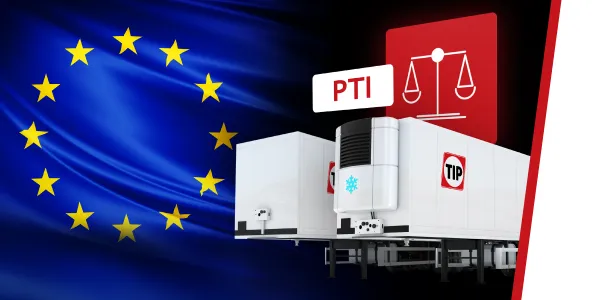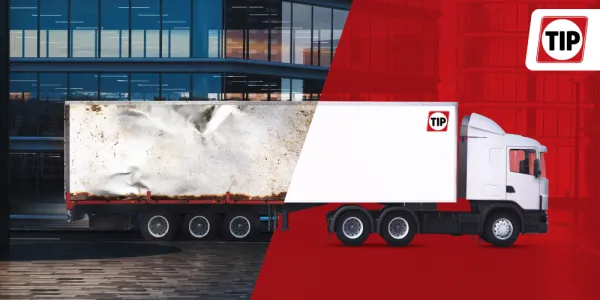Shippers achieve CO2 reduction goals with our CaaS model
How do we make CO2 reduction more feasible and attractive for shippers as well as carriers? That was the question that TIP is solving with the launch of the Carrier as a Subcontractor (CaaS) model. The model has recently been launched and is a great success for all parties involved. In this article, we will share a basic explanation of the model itself and look at the benefits of the CaaS model for shippers.
“With the CaaS model, shippers not only accelerate the reduction of their CO2 footprint, but also gain more control over the transport chain. TIP Group’s CaaS model allows shippers to drastically reduce their carbon footprint by motivating their carriers to upgrade their equipment.” – Rogier Laan, Vice President Global Sales & Marketing at TIP Group
What is the Carrier as a Subcontractor (CaaS) model?
Companies looking to distribute their goods are what we at TIP Group call shippers. Most of their transportation is performed by so-called carriers, transport companies. Generally, shippers and carriers enter into contracts of about 2 years before agreements are reviewed, while capital investment in transportation equipment has an investment horizon of at least 9 years. This makes it unlikely that a carrier will upgrade their equipment – e.g., exchange diesel-powered refrigeration for more sustainable electric equipment – based on a 2-year contract.
Working closely with shippers, TIP Group developed the Carrier as a Subcontractor (CaaS) model to solve this problem. TIP Group now offers carriers selected by the shipper the opportunity to invest in their equipment at interesting financial conditions while, at the same time, reducing the risk of such investments.
Our CaaS whitepaper shares the origin story of the CaaS model and a detailed explanation of the market forces that make it such a timely opportunity for the transport sector.
Benefits for shippers
The benefits of the CaaS model for shippers are:
-
Meet CO2 reduction goals
-
Gain additional control over the transport chain
-
Gain control of carrier fleet specifications
-
Reduce switching cost
Meet CO2 reduction goals
Many large companies are exposed to very aggressive measurements and targets for CO2 reduction, both due to external factors as well as internal motivation. But the transport, a significant contributor to the CO2 footprint, is a service that they procure. In transportation, CO2 reduction is largely driven by the adoption new equipment with a reduced carbon footprint. Incentivizing carriers to upgrade their equipment was one of the main drivers for the development of the CaaS model.
Gain additional control over the transport chain
Shippers tend to have limited control over the transport services performed by their carrier. As long as these companies meet the requirements of the contract, they have few incentives to make adjustments. With the CaaS model, shippers gain additional control over the transport chain. They can select who takes over the carrier contract and will continue to service them.
Gain control of carrier fleet specifications
Traditionally, fleet specifications are firmly in the domain of the carriers. With the CaaS model, shippers are more in control of the specifications of the fleets that fulfill their contracts and less reliant on their willingness to invest. Being able to define what fleet configuration suits them best allows for more strategic decision making and planning.
Reduce switching cost
The third benefit is a result of the control that the shippers have gained: the switching cost is reduced. Now, the shipper can provide the carrier with the equipment necessary to perform the contract, which not only increases the pool of potential transport companies but allows them to be more selective as well.
Discover how the CaaS model can benefit your organization
Talk to one of our specialists to discover the financial benefits for your company and calculate the CO2 reduction you can achieve with the CaaS model. Together, we will build a financial model based on a Total Cost of Usage (TCU) analyse that we can subsequently challenge. This conversation aims to identify the optimal solution that aligns with your company's needs and long-term aspirations.
For more information about our CaaS model and how it would apply to your company, contact your regular contact person, or click here to contact our team of service specialists.













